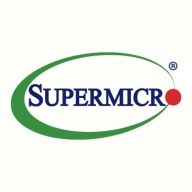

Supermicro SuperBlade and HPE Synergy compete in the high-performance computing category. While Supermicro SuperBlade is valued for pricing and support, HPE Synergy holds the advantage with its robust features, making it a preferred choice among users.
Features: Supermicro SuperBlade offers high-density computing power, energy efficiency, and flexible integration options. HPE Synergy features composable infrastructure, adaptable resource allocation, and enhanced workload optimization abilities.
Room for Improvement: Supermicro may need to improve scalability, user interface, and hardware compatibility. HPE Synergy could benefit from simplifying software complexity, reducing initial costs, and enhancing storage solutions.
Ease of Deployment and Customer Service: Supermicro SuperBlade provides straightforward installation with flexible integration capabilities. HPE Synergy offers an intuitive deployment model supported by comprehensive customer service, which simplifies complex deployment scenarios.
Pricing and ROI: Supermicro SuperBlade is known for its competitive setup cost and quick ROI through energy savings. HPE Synergy, despite higher initial costs, provides long-term ROI by reducing operational overhead and enhancing productivity through its adaptable infrastructure.


HPE Synergy, the first platform built from the ground up for Composable Infrastructure, offers an experience that empowers IT to create and deliver new value instantly and continuously. It is a single infrastructure that reduces operational complexity for traditional workloads and increases operational velocity for the new breed of applications and services. Through a single interface, HPE Synergy composes physical and virtual compute, storage, and fabric pools into any configuration for any application. As an extensible platform, it easily enables a broad range of applications and operational models such as virtualization, hybrid cloud, and DevOps. With HPE Synergy, IT can become not just the internal service provider but the business partner to rapidly launch new applications that become the business.
Supermicro SuperBlade delivers innovative computing performance and efficiency, perfect for data-intensive tasks. With its modular design, it optimizes space and power, providing a flexible and scalable infrastructure for demanding business workloads.
Supermicro SuperBlade is specifically engineered for modern data centers needing high-density computing. It offers a compact, modular architecture that simplifies system management and enhances agility. It integrates seamlessly with cloud and virtualization technologies, supporting diverse applications and workloads. Its design focuses on reducing operational costs while achieving peak performance. Users appreciate its balance of power efficiency and high computing capacity.
What are the key features of Supermicro SuperBlade?Supermicro SuperBlade is widely implemented in sectors such as finance, healthcare, and research where high computational power and storage are critical. In finance, it's used for real-time analytics and transactions. Healthcare facilities use it for patient data analysis and complex simulations, while research institutions leverage SuperBlade for simulations and data-intensive research tasks. Its adaptability allows enterprises to efficiently meet technical requirements unique to each industry.
We monitor all Blade Servers reviews to prevent fraudulent reviews and keep review quality high. We do not post reviews by company employees or direct competitors. We validate each review for authenticity via cross-reference with LinkedIn, and personal follow-up with the reviewer when necessary.